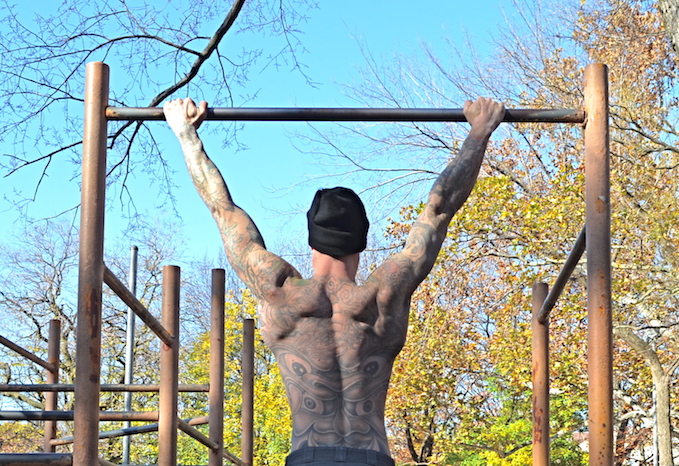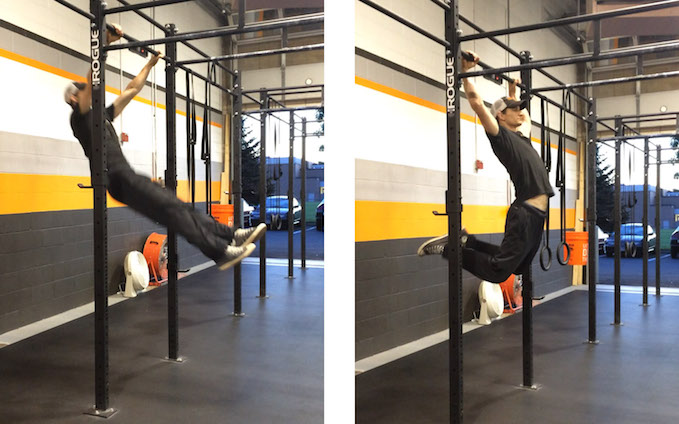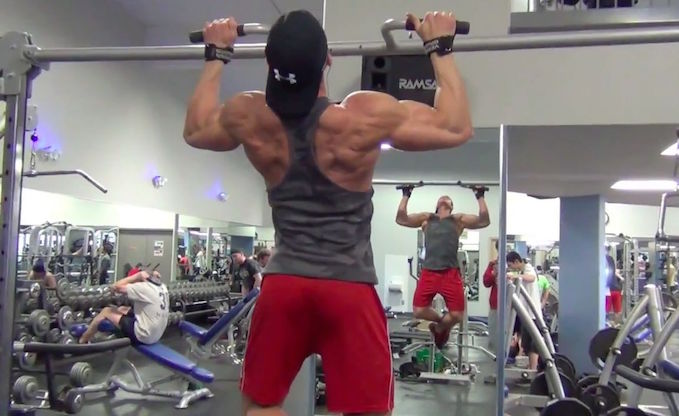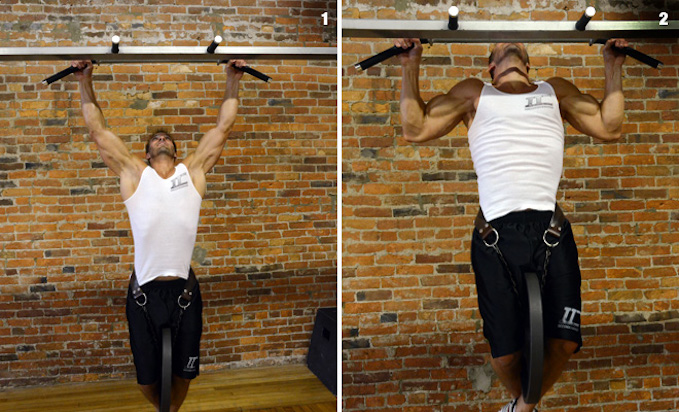The Definitive List Of Pull-Up Mistakes

Pull-ups are one of our favorite upper body exercises.
Requiring just a bar and your body weight, pull-ups effectively target a lot of different muscle groups.
While pull-ups primarily work out your lats, they also hit your rhomboids, biceps, rear deltoids, and your traps.
And as far as form goes, especially compared to exercises like deadlifts and squats, they are on the easier end of things.
That being said, there are still a whole bunch of ways that you can go wrong with pull-ups – making them less effective or even potentially dangerous.
In this article, we’re going to go over 8 of the most common pull-up mistakes that people tend to make, and how to fix them, so that you can start doing this exercise with perfect form.
1) You’re not going to ‘dead hang’.

When you do pull-ups, it’s all-too-easy to do ‘half reps’ if you’re not careful.
This will mean that you’re not doing the movement through a full range of motion, and therefore not getting the maximum amount of benefit from the exercise.
One place that many people tend to stop short is at the bottom of each rep.
Instead of going to ‘dead hang’, where they are literally hanging with their arms fully extended, they will stop several inches higher with their elbows still bent.
This dramatically shortens the range of motion, and doesn’t train the back as effectively, so make a conscious effort to go to dead hang for each rep.
You can even rest there for 1-2 seconds on some of the later reps in a set if you need to.
2) You’re not getting your chin above the bar.

On the other end of things, in order to complete a full pull-up, you need to bring your chin above the bar.
This is another mistake that many people make…
They’ll stop short, with maybe their nose or the top of their head at bar level, and then go back down.
Just like the first mistake, this leads to a much shorter range of motion, and won’t train your muscles as effectively.
3) You’re using too much momentum.

Pull-up should be done as a very controlled movement.
Unlike kipping pull-ups, which is a somewhat odd, cross-fit specific exercise, regular pull-ups shouldn’t utilize momentum.
This means lowering yourself in a slow, controlled manner for each rep, and then pulling yourself up in the same way.
And while a little bit of body english is OK to get out that last good rep, you should never look like you’re flopping around like a fish out of water.
4) You’re gripping too wide.

This is an extremely common pull-up mistake that the majority of people make.
When you grip the bar for pull-ups, you don’t want to go too wide.
Instead, you want to be gripping just outside of shoulder width.
This provides the biggest range of motion for the exercise, and also takes strain off of your elbows and shoulders.
5) You’re not keeping your shoulders back.

There is a tendency for your shoulders to roll forward during pull-ups.
When this happens, more of the strain shifts to your shoulders, setting yourself up for a potential rotator cuff injury.
The easiest way to keep your shoulders back during pull-ups is simply to focus on keeping your chest up.
This means that you should effectively lead with your chest, as if you are trying to get it to touch the bar, instead of leading with your shoulders.
6) You’re not keeping your back flat.

In order to avoid putting pressure on your spine, you want to keep your back as flat as possible while doing pull-ups.
When you’re fatigued, it can be easy to hyperextend your lower back, which can compress your spinal disks and cause back pain.
In order to prevent this, you should tighten your abs and straighten your legs as much as possible while pulling yourself up.
This will cause your back to maintain a more neutral position, instead of excessively arching.
7) You’re doing pull-ups before you can actually do pull-ups.

Just as with dips, you need a certain level of strength relative to your body weight to do pull-ups properly.
If you’re a heavier, or simply don’t have the requisite level of strength yet, you may find that you can’t do pull-ups for reps while maintaining good form.
In this case, you have 2 options:
1) Do assisted pull-ups (either with a band or a machine).
2) Do other, similar exercises – like the lat pulldowns – to develop your strength.
I wouldn’t recommend working with unassisted pull-ups until you can do at least 4 reps with your body weight.
8) You’re not challenging yourself.

On the other end of the spectrum, it is very easy to get to a point with pull-ups where they become too easy.
This happens when you can do sets of 10 or more pull-ups with your body weight.
If you want to continue to get stronger and more muscular, you need to add more weight to your pull-ups.
The easiest way to do this is to purchase a dip belt, and then progressively increase the amount of weight you can do while working in a fixed rep range.
Ready to master pull-ups and build a powerful back?

Pull-ups are an incredibly rewarding exercise, and are well worth your effort.
In fact, we would say that it is the single best lat exercise out there – bar none – especially once you start adding some serious weight.
So make pull-ups a core part of your routine, and focus on slowly building up your strength with them week after week.
You can get a pull-up bar to use at home (we recommend the Iron Gym Total Upper Body Bar), so there really are no excuses!